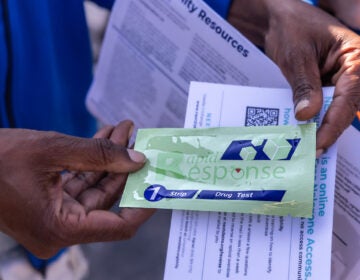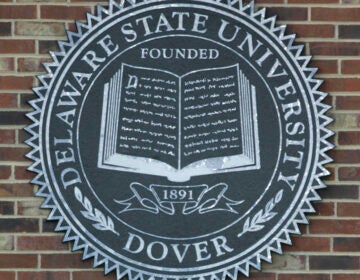In Delaware, a test students want to take (and districts want to give)

(Photo via ShutterStock)
Here’s a rarity for you: A positive story about testing in education.
To tell it we head to the Seaford School District in rural, Southern Delaware. Due to an influx of immigrants from Latin America and Haiti, about 11 percent of Seaford’s students are English Language Learners. That’s the second-highest rate among Delaware’s 19 school districts.
Schools often struggle to graduate students with limited English proficiency. Statewide, the graduation rate for students with limited English proficiency is 75 percent. That’s the lowest mark for any identified subgroup in Delaware, with the exception of special education students.*
Immigrant students face more than just a language barrier on their road to a high school diploma. They may have received limited or interrupted education in their home countries. They may feel compelled to work in order to support their families. And on a more practical note, they may simply lack credits.
Students with limited English proficiency must take specialized English Language Learner classes, which count only as electives. They must then take all their core classess–such as English, math, and science–on top of their ELL classes. That makes scheduling difficult, which can delay students’ progression.
“Sometimes you can get a student who comes to the country at the age 14 or 15 with no high school credits and everyone is scrambling on how to help that child to graduate,” says Kelly Hageman, Seaford’s supervisor of intstruction. “And we also have so many requirements.”
Among those is a requirement that students earn two credits in a foreign language. And so last year, officials at the Delaware Department of Education approached Seaford with an idea: Why not give immigrant students–who are already starved for schedule space–credit for the languages they already know?
“When it was presented, the first initial reaction was, well, why haven’t we already been doing this,” says Kyle Bentley, assistant principal at Seaford High School.
In 2011, Delaware joined a growing handful of states that offer world language credit based on proficiencey (there are now 16 such states, according to the National Council of State Supervisors for Languages). That means students don’t need to take a course to earn credit, but simply have to demonstrate they know a foreign language by taking a test.
This past spring, with financial support from the Delaware Department of Education, Seaford gave 26 immigrant students the option to take a test in their native tongue. All 26 passed and all 26 fulfilled their foreign language requirement.
“It’s one more thing we can do to help them on their journey to graduate and move on to college and careers,” says Bentley.
There’s also an intangible value to these tests, says Hageman–they instill confidence in a student population that often needs affirmation.
“One of the students after hanging up the phone with the speaking interview said, ‘Wow, that was so much fun to be able to speak in Creole. And people thought it was something valuable,'” says Hageman.
Monika Saint Jean, a junior at Seaford High who immigrated to the states three years ago, recalls her French test as the easiest she’s taken in a long time.
“All you gotta do is just talking and writing and I was like, that’s like kindergarten stuff,” says Saint Jean with a laugh.
Last year, Seaford administered tests in Spanish, French, and Haitian Creole.
This year, the Delaware Department of Education plans to spend around $35,000 to cover the cost of tests in eight other districts
*Technically, there was a lower graduation rate for migrant students and Hawaii or Pacific Islander students. There were less than five total graduates, however, in each of those categories.
WHYY is your source for fact-based, in-depth journalism and information. As a nonprofit organization, we rely on financial support from readers like you. Please give today.





